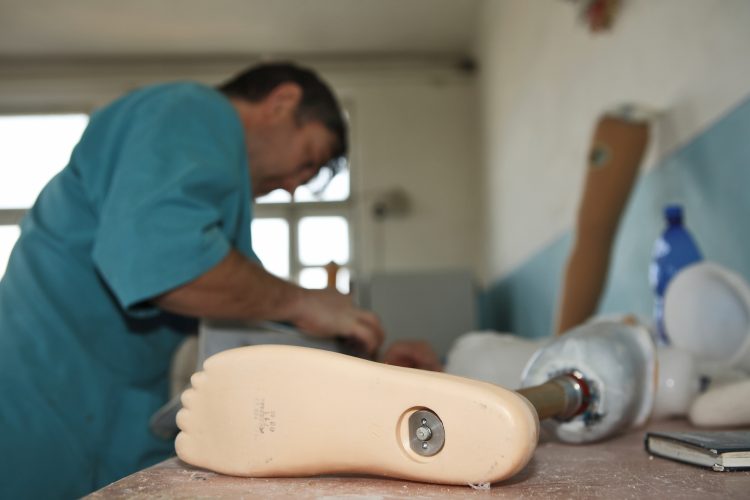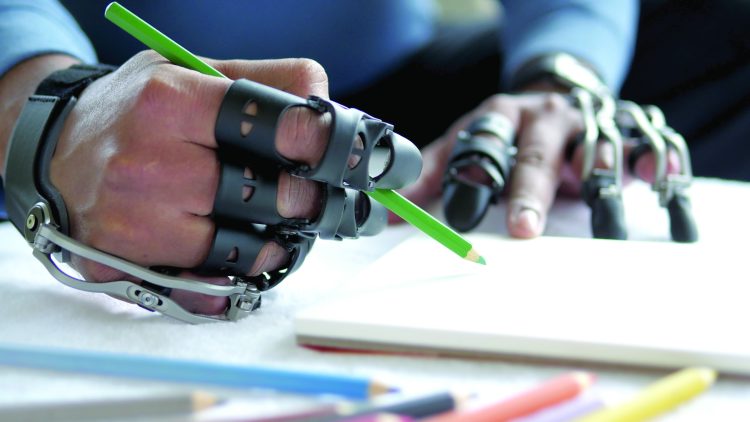- Home
- |
- About Us
- |
- News and Events
- |
- Resources
- |
- Contact
- |
- Donate today

The type of prosthesis you have will depend on such things as:
Prosthetic components have weight limits and recommendations based on mobility. Underestimating weight or activity levels could result in a prosthesis that is not strong enough to let you be active safely and this can be dangerous. However, overestimating weight or activity could result in you wearing a prosthesis that is heavier than it needs to be. To achieve the best outcome, you need to be honest in discussions with your doctor and prosthetist.
There are many other examples of how these factors can influence what is best for you. It is not always easy. Sometimes a certain type of prosthesis looks like a great choice, but problems may occur.
If you are a lower limb amputee sometimes prostheses, or the components of a prosthesis, are referred to by their ‘K’ classification. This is simply a measure of activity, for example:
• K1, Suitable for use on level surfaces at steady speeds. That is someone who only walks indoors and short distances outdoors for example to the car.
• K2, Suitable for outdoor use but at a low activity level. For example: someone who manages steps and slopes but walks limited distances and may use a stick or other gait aid.
• K3, Suitable for general outdoor use, but not including sports and other high impact activities. i.e. someone who walks in most commonly encountered environments, at varying speeds, long distances when required and usually without a gait aid.
• K4, Suitable for high impact use. For those people who have unrestricted mobility and may impose higher than usual forces on their prosthesis, e.g. sports, manual work.
Componentry manufacturers often rate their components according to these classes or mobility grades. This is why your prosthetist will ask you about your activities, so they can choose componentry that is safe and effective for your lifestyle.
Regardless of your level of amputation; if you are going to use a prosthesis you need to use it regularly to maintain your skills
Using a prosthetic limb takes a large amount of energy because you have to compensate for the loss of bone and muscle of the amputated limb. A person fitted with an above knee prosthesis may need to use up to sixty percent more energy to walk. For this reason some people choose not to use a functional prosthesis. If this is the case the option of a ‘cosmetic-only’ prosthesis could be the best choice.

People with upper limb amputations may decide not to use a prosthesis at all and/or may only wear a prosthetic arm for certain activities such as: work around the home, riding a bike or doing a particular activity.
Like anything which is used a lot, your prosthesis will suffer wear and tear. Repairs and adjustments are an unavoidable part of an amputee's life. These can usually be arranged directly with your prosthetist. Do NOT attempt your own adjustments. You can easily make the problem worse.
If you inadvertently get saltwater or similar on your prosthesis (unplanned romantic walk on the beach, for example) rinse it off with plenty of freshwater as soon as you can and dry it off. If you can't remove the cover to do this then take it to your prosthetist as soon as possible. Certain components are particularly vulnerable to sand and salt damage.
Also remember that your prosthesis will be made with a particular weight limit in mind. If you are going to do heavy lifting or much more vigorous activity than normal, check that your prosthesis will be able to handle it.
Keep up to date with our latest news, events and information